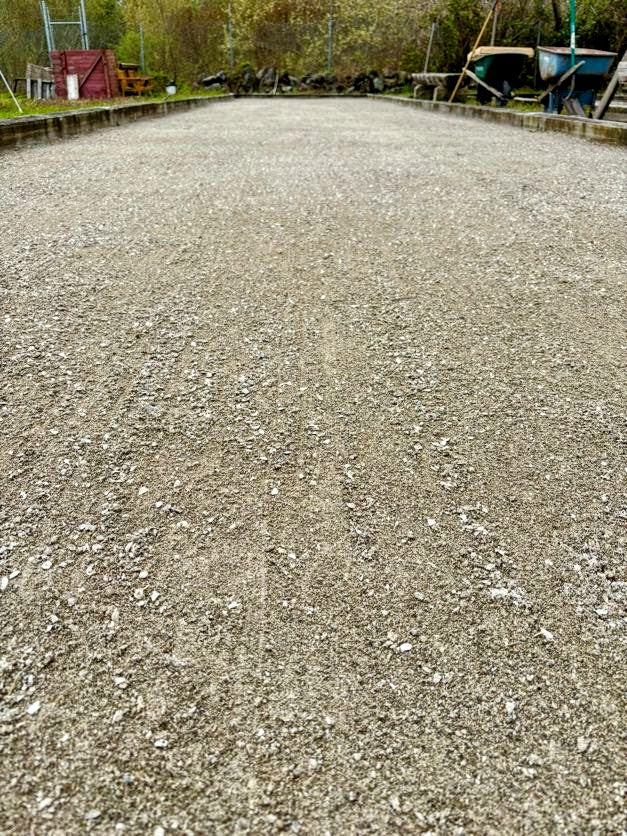
Spring Maintenance: Getting the Mosst Out of Your Court
Here in the Pacific Northwest, we’re no strangers to moss. More often than not it’s a welcome sight—lush green carpets beneath towering old-growth trees, and branches draped in vibrant, neon sleeves. It’s one of the region’s most distinctive features. But when it comes to our bocce courts, moss is one guest we don’t want sticking around.
It’s no coincidence that the best time of year to tackle mossy bocce courts is also the season of fresh starts—springtime. Leading up to our annual DeBoccery Brewers tournament, Tom and I set out to give our two bocce courts a much-needed spring cleaning.
As we explain on our moss maintenance page, the first step in dealing with moss on your bocce court is to spray a moss-killing agent. This time, we went with a pure 30% vinegar solution for maximum effectiveness, but a diluted mixture will work too. We sprayed both courts twice, making sure to work during consecutive days of dry weather.

Once the moss was dead—easy to spot by its dull brown color change—it was time to sift the top ¼ inch of the court’s surface through a sifting frame. You can easily make one at home using an 8' 2x4, an 8' 1x3, ¼" mesh wire, a bagful of nails, and some staples.

The trick to even, controlled sifting is to work in small sections, one square yard of court at a time. Using a flat-end shovel, scrape off the top layer (it often peels up nicely in strips) and place it directly in the sifting frame set over a wheelbarrow. Sift by hand until only a few flakes of oyster shell remain, discarding any large pieces you don’t want back on the court. Once sifted, return the material to the exact spot it came from and smooth it with your hand or a lute. This prevents over- or under-dressing any area of the court.



Continue this process—scraping, sifting, and replacing—in a grid pattern until the entire court is done. The top layer will be soft at this point so it is best to lightly water it and give it time to settle. The following day (ideally), use the lute side of our 30" or 48" scarifier/lute to drag material up and down the court, redistributing some material to fill in low spots and achieve a level surface.


Once the court looks even, you will want to water it gently with a spray nozzle. We find it helps to work in 10 foot sections of the court rather than try to attack the whole court all at once. You have likely watered it sufficiently when you see it just beginning to pool at the surface. Once you've done this to the entire court, let it rest for 15 minutes before compacting with a plate compactor. For best results, use the smoothest plate possible—worn plates with imperfections can easily grab hold of the oyster shell and leave an uneven pattern.


For the finishing touch, we ran our 6' maintenance broom up and down the court in a flowing “S” pattern, giving it a final leveling and polish.

All it took was a little spring cleaning and our bocce courts are tournament and summer ready!
